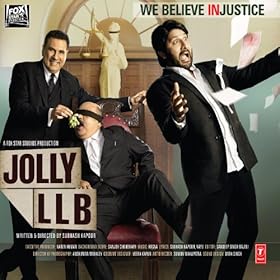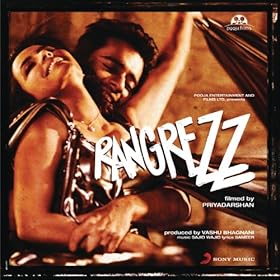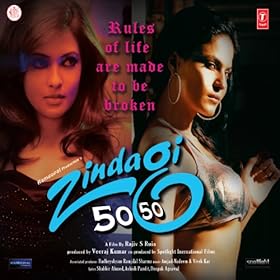Music: Bramfatura, Mikey McCleary, Maatibaani, Remo Fernandes, Prashant Pillai, Gaurav Godkhindi, The Lightyears Explode, Dub Sharma, Modern Mafia, Anirudh Ravichander
This album is like a rock bands of India convention. Lots of alternate music, rock and a great deal of experimentation away from the typical Bollywood cliche. The previous statement, thus, in itself is a forewarning of sorts. Also, my constant lament of Suraj Jagan doing the rock tracks in Bollywood finally gets a break. With a great deal of novelty also comes a heartbreaking acceptance that everything new and shiny is not necessarily the best. This album of 15 songs makes for an interesting experience for the curious and exploratory souls out there, but here's a few that actually might just entertain one and all.
1. Maria Pitache ------------------------------------------------------------------------------------------------------- 8/10
The song title is quirky and the song is also a bit soft to interest anyone. But bam! It just transforms all of a sudden into a full blown Goan pop with half the song in Konkani and the rest in Hindi. The lyrics and fun and makes you want to down a couple of shots and jump right in the fun that is Maria Pitache. C'mon, don't be uptight about it, just let it all loose.
2. Three Kills ------------------------------------------------------------------------------------------------------------- 7/10
This is one exciting indie rock by The Lightyears Explode. Those who would love to explore the rock music coming out from India, this will be an interesting one to listen to. The guitars and the transitions have been done well, to keep it exciting enough. The lyrics get lost mostly, but still fun to listen to.
3. Yun Hi Re ------------------------------------------------------------------------------------------------------------- 6/10
Among all the newness, Yun Hi Re comes as a pleasant normalcy in a slow and silent romantic track. The length of the song is an issue given it's pace and tune, but nevertheless, is a soothing song for easy evening together.
Final verdict: Overall, this is an average album, but if you are looking for something new and decent, this one's a good one to try out.
Music: Sangeet-Siddharth
The overall verdict on the album is, the music directors have done well enough to create an eerie enough effect with albums. But, when we are at the overall opinion of an album, it shouts of below average songs. Albums from the similar genre have done much better in comparison, 1920 Evil Returns, Shaapit or Haunted - 3D by Chirantan Bhatt.
In the spot:
- Teri Khatir - Representative of the rock movement in Bollywood, led by none other than Suraj Jagan. Not him again. The rock part is good, but there is a certain need of a better vocalist. Suraj Jagan is a great singer by himself, but he turns into a hoarse cacophonous voice when he does rock.
- Koi Jaagi Aankhein - Just great for it's eerie lyrics. Interesting blues type of song sung proficiently by Alyssa Mendonsa, but otherwise forgettable.
Music: Sajid-Wajid
If you are looking for some rowdy fun, you got it. Conversely, what else could you expect from Sajid-Wajid? Out of the 5 songs, 2 of them are remakes anyways. So, to be fair, this is a below average effort the pair, who arguably have very little legitimate success anyways. And like I mentioned in my previous music blog, what's up with Bappi Lahiri and his comeback into the mainstream?
Bad album.
Music: Rooshin Dalal, Amar Mohile, Vishal R Khosla, Sushil R Khosla, Mohan Khan
Too many musicians to create so little real music. Most of it is background noise, while there is some gritty music, but again nothing interesting. If you loved, Rakht Charitra title track, you might add Maula Maula to the list.




